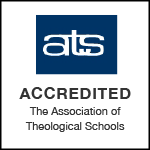UD Aviation Program Installs New Flight Training Device
Aug 7, 2012 | University of Dubuque Theological Seminary
This Spring, the University of Dubuque Aviation Department was equipped with a new, state-of-the-art Aerosim Flight Training Device (FTD).
"Generous grant funding from the Department of Education made the acquisition of our new FTD possible," stated Steven Accinelli, aviation professor and department chair. "This state-of-the art avionics and navigational equipment is a significant improvement for our aviation program and for the progress of our students. The FTD will increase their competitiveness in the aviation marketplace."
The Aerosim CRJ200 Level 5 compliant FTD adheres to FAA standards and includes a cockpit with all associated system panels. Benefits include showing students many critical operations and procedures such as: traffic collision avoidance systems with resolution advisories, enhanced ground proximity warning systems, wind shear alerts, on-board radar, thunderstorm avoidance, icing systems, engine failures at rotation, single engine procedures, fire protection panel, turbine engine starts, systems failures, autopilot operation, and deicing operations.
"The CRJ 200 simulator was installed during the beginning of the Spring 2012 semester and has been an instrumental tool for transitioning our students into the types of aircraft they will encounter in the airline industry," commented William Rigdon, instructor of aviation, assistant flight instructor, and CRJ project manager. "Our goal for this project is to make our students' training event a mirror image of what will they will encounter as they enter as a new hire into various airlines' ground schools."
The FTD encompasses a physical hardware replica of CRJ panels and components, a 220 degree visual system with customized airports and a control loading system.
The hardware also provides:
- the most realistic and comprehensive training scenarios for the aircraft;
- dual seat, dual control column, and two sets of rudder pedals with toe brakes. The unit's full range of capabilities for the most effective, risk-free training of pilots is enhanced with a digital control loading software system, simulated aircraft flight management system, wind shear scenarios, and over 100 aircraft malfunctions;
- field of view wrap-around screen and cross cockpit views, providing student pilots with realistic visuals; and
- a navigation database that can be updated annually along with a lesson plan editor for creating new programs.
"The response from the students who have completed both the advanced aircraft systems and crew resource management courses have been overwhelmingly positive," stated Rigdon. "One of the aspects they enjoy the most is that it is all being taught by current or prior airline pilots who can interject what training is like in the industry."
"The design, manufacture and installation of this CRJ FTD is a clear demonstration of Aerosim's commitment and ability to provide these innovative, feature-rich training tools and technologies to the university market" commented Phil Brown, Aerosim's vice president of operations. "We are thrilled to be able to bring to the University of Dubuque the same high fidelity family of tools that has met the training needs of numerous airlines worldwide."





